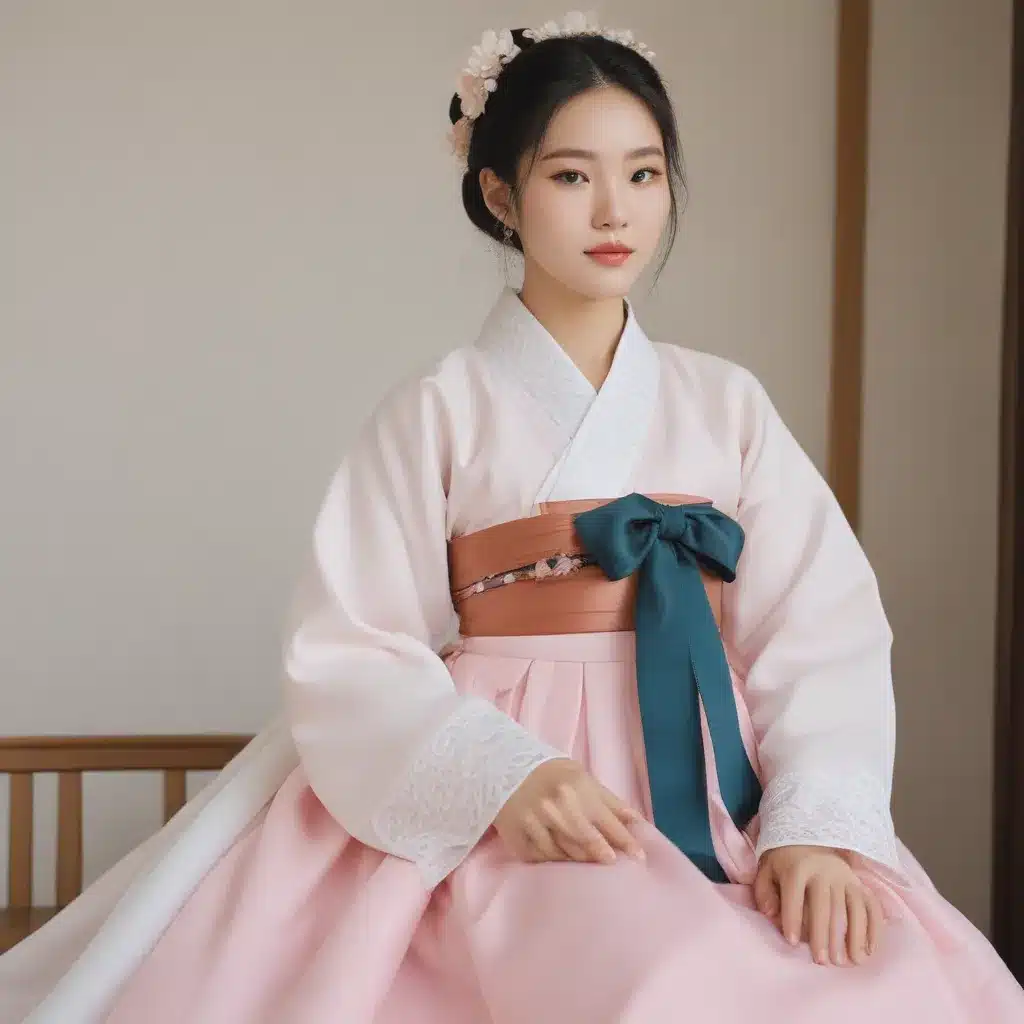
The Reinvention of the Traditional Hanbok
Discovering the Enduring Allure of Korea’s Cultural Treasure
Ah, the humble hanbok – that iconic garment that conjures up images of graceful, elegant Koreans gliding through the streets of Seoul. But don’t be fooled by its seemingly simple design. This traditional attire is a treasure trove of cultural heritage, a living testament to Korea’s rich history and evolving identity.
As I unravel the fascinating story of the hanbok’s reinvention, I can’t help but feel a sense of wonder. You see, this isn’t just about a piece of clothing; it’s a journey through the very heart and soul of the Korean people. So, let’s hop on board our trusty time machine and explore the captivating evolution of this cultural gem, shall we?
A Stroll Through the Centuries
Our first stop? The Three Kingdoms period, where the foundations of the hanbok were laid. Back then, each of the Goguryeo, Baekje, and Silla kingdoms put their own distinctive spin on this traditional attire, reflecting their unique cultures and traditions. It was a time when the hanbok truly blossomed, becoming a visual tapestry of Korea’s diverse heritage.
Fast-forward to the late 19th and early 20th centuries, and we witness a curious twist in the tale. As Western influences seeped into the Korean way of life, the popularity of the hanbok began to wane, with people opting for more “modern” fashions. Ah, the fickle nature of trends, eh?
But the story doesn’t end there. In the 20th century, a remarkable revival took place, as Koreans sought to reclaim and preserve their cultural identity. The white hanbok, in particular, became a symbol of purity, unity, and resistance – a testament to the enduring spirit of the Korean people.
Embracing the Modern Hanbok
And now, we arrive at the present day, where the hanbok has undergone a remarkable transformation. Enter the “modern hanbok” – a fusion of traditional elements and contemporary design that’s captivating the hearts and closets of Koreans and beyond.
These modern interpretations maintain the essence of the original hanbok, with its signature silhouette and vibrant colors, but they’ve been given a stylish, up-to-date twist. Designers have expertly blended the conventional Korean motifs and fabrics with a more streamlined, practical aesthetic, making the hanbok a versatile choice for everyday wear.
One of the most striking features of the modern hanbok is its gender-neutral appeal. Gone are the days of strictly defined masculine and feminine styles – today, anyone can don these sartorial masterpieces, regardless of their gender identity. It’s a true testament to the adaptability and inclusivity of this cultural icon.
The Hanbok’s Fashionable Comeback
But the modern hanbok’s appeal extends far beyond the borders of Korea. In recent years, we’ve seen a growing number of K-pop idols and celebrities embracing this traditional-yet-trendy attire, from BTS to BLACKPINK. Their eye-catching performances and photoshoots featuring modern hanboks have captured the imagination of fans worldwide, sparking a global fascination with this uniquely Korean fashion statement.
And it’s not just the rich and famous who are getting in on the action. Thanks to the efforts of talented designers and fashion enthusiasts, the modern hanbok has become more accessible than ever before. Customization options allow people to create their own personalized pieces, blending traditional elements with their individual style preferences.
Honoring the Past, Embracing the Future
As I stroll through the streets of Seoul, I can’t help but marvel at the enduring legacy of the hanbok. This garment is not just a fashion statement; it’s a living, breathing embodiment of Korea’s rich cultural heritage. And with the rise of the modern hanbok, it’s clear that this treasured tradition is not only being preserved but also reinvented for a new generation.
So, the next time you find yourself in Seoul, at our hotel or elsewhere, keep an eye out for the stunning displays of modern hanboks. You might just be inspired to don one yourself and feel the weight of history on your shoulders as you embrace the future of this cultural icon.

